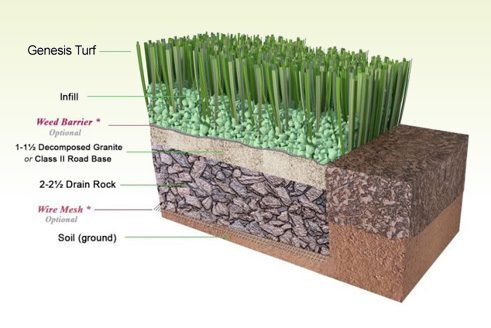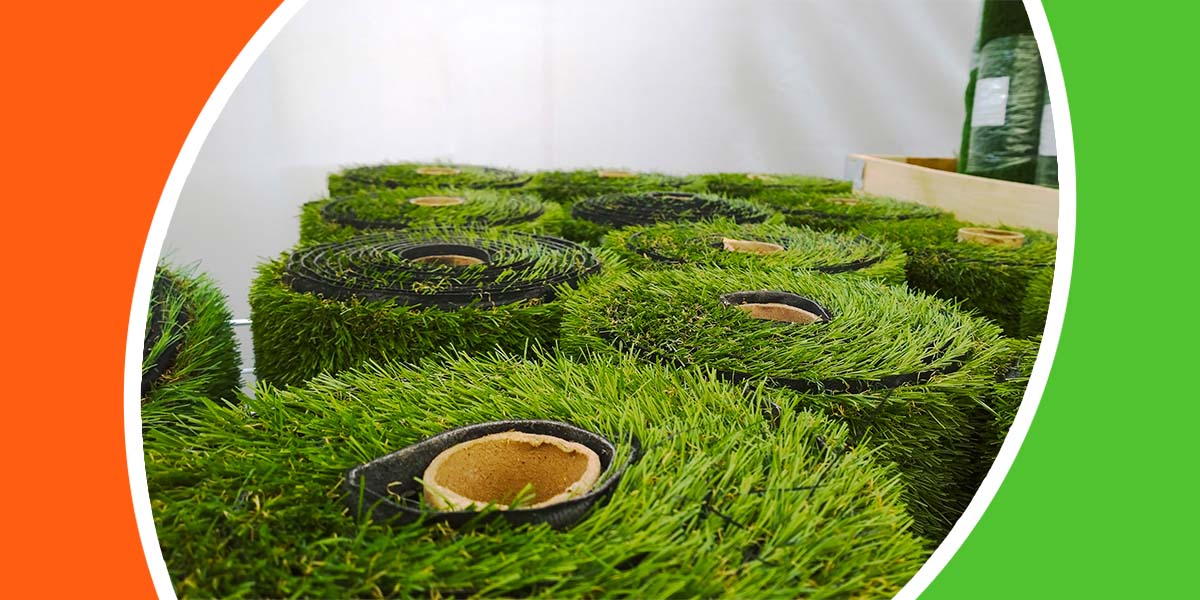Long-Lasting Arizona Artificial Turf for Residential and Business Applications
Long-Lasting Arizona Artificial Turf for Residential and Business Applications
Blog Article
Delve Into the Environmental Perks of Opting for Artificial Lawn Solutions
The adoption of synthetic grass services presents a compelling opportunity to resolve pushing ecological obstacles. By dramatically decreasing water use and decreasing the application of hazardous chemicals, these options not only advertise sustainable landscape design but also safeguard neighborhood ecosystems.
Water Preservation Perks
Among one of the most significant advantages of artificial turf is its ability to conserve water. Standard lawn yards call for significant irrigation, especially in locations prone to drought or water constraints. In comparison, synthetic grass does not need watering, dramatically lowering the total need for water resources. This feature is especially useful in arid areas where water shortage is a pressing concern.
By eliminating the need for normal watering, synthetic grass adds to sustainable landscape practices and assists reduce the ecological impact of excessive water consumption. Moreover, the conservation of water expands to the decrease of runoff, which can bring about dirt erosion and waterway air pollution.
Additionally, the setup of synthetic grass enables districts and property owners to allocate water sources much more effectively, focusing on essential uses such as alcohol consumption water and farming. The change towards synthetic grass not only promotes liable water usage however additionally lines up with broader environmental objectives targeted at preserving natural sources.
As areas increasingly prioritize sustainability, the water conservation benefits of artificial lawn provide a compelling case for its adoption in household and industrial landscape design jobs.
Minimized Chemical Use
The transition to synthetic grass substantially lowers the dependence on chemical treatments frequently used in all-natural yard upkeep. Conventional grass management commonly involves the application of herbicides, plant foods, and pesticides to promote development and control insects. These chemicals can posture threats to human health, neighborhood wild animals, and the environment, adding to soil and water contamination.
In comparison, synthetic grass eliminates the demand for these harmful materials. As soon as installed, it requires very little maintenance, mostly consisting of regular cleaning and infrequent infill replenishment. This decrease in chemical usage not just benefits the immediate environment however additionally contributes to broader eco-friendly stability. By lessening the launch of artificial compounds right into the ecosystem, fabricated grass promotes much healthier soil and water supply.
Additionally, the lack of chemical overflow connected with artificial grass setups aids protect regional rivers from contamination, supporting aquatic life and preserving biodiversity. Arizona turf. As communities significantly prioritize lasting practices, going with synthetic grass presents a viable option that lines up with ecological conservation goals. Via this shift, homeowner can appreciate lush environment-friendly areas without compromising eco-friendly health, paving the method for an extra lasting future
Reduced Carbon Footprint

Moreover, the installment of synthetic grass can result in significant water conservation. Natural yards need substantial amounts of water for irrigation, which not just includes in the carbon footprint connected with water extraction and treatment however additionally stress regional water sources. In contrast, fabricated grass needs marginal maintenance, requiring no watering, thereby dramatically lowering water use and its associated power prices.
Furthermore, the long life of synthetic lawn adds to its decreased carbon impact. With a life expectancy of approximately 15 years or even more, the need for regular substitutes is reduced, resulting in much less waste and lower power usage in production and disposing of conventional lawn options. Overall, synthetic grass offers Read Full Report a sustainable choice for eco mindful landscape design.
Habitat Conservation
Habitat preservation is an essential factor to consider in the argument over landscaping selections, especially when contrasting man-made grass to all-natural grass. Natural yard yards usually call for substantial upkeep, including using plant foods, herbicides, and chemicals, which can detrimentally influence local ecological communities. These chemicals can leach into the soil and waterways, harming native flora and fauna and disrupting neighborhood habitats.
Man-made turf removes the need for hazardous chemicals, consequently safeguarding close-by wildlife and preserving the stability of bordering ecological communities. The installment of artificial lawn can lead to the conversion of former yard locations into more biodiverse landscapes, such as pollinator gardens or indigenous plant locations, which can support regional wild animals.
Eventually, the change to fabricated grass not just saves water and minimizes maintenance efforts but likewise promotes a more harmonious connection in between human tasks and the all-natural setting, promoting environment preservation while doing so.
Long-Term Sustainability
Long-lasting sustainability is a critical consider examining the benefits of synthetic grass over standard grass lawns. Among the most significant advantages of artificial grass is its toughness; it can last up to 15-20 years with very little maintenance, whereas natural lawn calls for frequent reseeding and substitute. This long life minimizes the requirement for continuous resources, such as water, plant foods, and pesticides, which are vital for keeping a healthy and balanced yard lawn.
In addition, fabricated lawn contributes to a reduction in carbon exhausts linked with yard care equipment. Conventional grass commonly call for gas-powered lawn mowers, leaners, and blowers, all of which contribute to air pollution. Phoenix turf companies. In comparison, synthetic grass removes the demand for such devices, promoting a cleaner atmosphere
In addition, the manufacturing of synthetic grass progressively uses recycled materials, improving its sustainability profile. As visit our website manufacturers embrace environment-friendly methods, the ecological footprint of artificial grass remains to lessen.

Conclusion
The fostering of fabricated lawn remedies offers significant ecological advantages, consisting of substantial water preservation, reduced dependence on unsafe chemicals, and a lower carbon impact. Synthetic lawn help in protecting all-natural environments by reducing land disturbance and promoting long-lasting sustainability with the use of resilient materials. Jointly, these elements emphasize the possibility of man-made grass to add favorably to ecological health and provide a viable alternative to traditional landscape design practices in an increasingly resource-conscious globe.
In contrast, fabricated lawn does not need watering, substantially decreasing the general demand for water resources. By lessening the launch of synthetic compounds right into the ecological community, synthetic lawn advertises much healthier soil and water systems.
Furthermore, the installment of man-made grass can result in considerable water preservation. In comparison, artificial lawn requires very little maintenance, requiring no watering, thus dramatically decreasing water use and its linked energy expenses.

Report this page